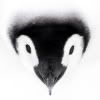A geologist's view of the Hingol Island

The close view of newly appeared mud volcano near Hingol shows oozing of Methane gas. – Photo courtesy by Geological Survey of Pakistan.
Hingol, Balochistan: A soft muddy island appeared a few kilometers offshore in Hingol on the Makran coast, Balochistan on November 16, 2010. The Director General, Geological Survey of Pakistan (GSP) dispatched a team of earth scientists to investigate the sudden appearance of this white mud dome, about three kilometres offshore near the Kund Malir beach.
The island is 90 metres high with a span of approximately three kilometers.
Before the upsurge of sludge, local fishermen reported high tides near the coast and several boats were trapped due to the emergence of this mud volcano from nowhere. Another island of similar nature was also reported to have appeared 12 years ago. That island disappeared into the sea after four months. It is inferred that this mud dome which is given the name of Khizr, will also disappear with passage of time when methane and other gases are released from this structure.

The image shows white hot muddy sludge on the top of the island. – Photo courtesy by Geological Survey of Pakistan
The pictures taken by GSP earth scientists during their field investigations shows the eruption of white hot muddy sludge on top of the island. The ejected material is a sludge of fine solids, hydrate-bearing sediments suspended in acidic water and hydrocarbon fluids.
This mud dome seems to be formed by geo-excreted liquids and methane gas when hot water mixes with mud and surface deposits. Mud volcanoes are associated with subduction zones and the Makran coastal area is in close vicinity of triple junction where three major tectonic plates – namely Eurasian, Arabian and Indian plates meet.
Mud volcanoes are not true magmatic volcanoes.They are like steam-vents erupting pressurised gases and the strength of their eruption is quite diverse. It may be a result of a cone-like structure created by pressurised mud diaper or salt dome, which breaches the earth's surface or ocean bottom.
Mud volcanoes along tectonic subduction zone may be indicative of petroleum products. These mud domes tend to start out as small bulges in the earth which develop into cones.
The bulge is created by a build-up of pressure underneath relatively plastic rock. Areas of increased tectonic activity are frequent sites for mud volcanoes. More than 80 active mud volcanoes have been identified on the Makran coast; there are about 10 locations in Hingol and Hinglaj area having clusters of mud volcaones.
One of the highest and biggest mud volcanos in the world, Chandragup – means moon volcano – is located in close proximity. It is 125 metres high and more the 450 metres wide. Such type of mud volcanoes are associated with active subduction zones and tectonic forces and large sedimentary deposits create these geological formations.
Mud volcanoes sometimes temporarily emerge due to earthquakes but the mechanism by which earthquakes trigger changes in submarine mud extrusions are not completely understood.
An earthquake may have resulted in mud flow and release of methane and hydrogen sulfide gases which can cause the volcano to flare. On 28 November, 1945 during M8 great Makran Earthquake, which also generated a tsunami, a light was reportedly seen over the Chanay mountain in the direction of Hinglaj and fell on the sea, burning for about three days in two parts. Interestingly enough, an earthquake of 5.1 magnitude was recorded the in the area on the 16th November, 2010.
The geological field investigation for the emergence of Arabian Sea Sapt Island (ARSSI) revealed that the island is located 17 km from the Wad Bandar and 3.2 km from the Chadman coast. The island is spread over an area of 0.8 Sq. km and its height is 35 meters above sea level. There are five vents on the island which are still active and erupting mud with pressure. Methane gas emitted out from the vent-2 is highly flammable while vent-3 mostly reacts after four minutes with sound and pressure and mud is flown in the air up-to 15 meters.
Azerbaiijan and its Caspian coastline are home to nearly 400 mud volcanoes. While mud volcanoes found in Andaman Island, India; Taman Peninsula of Russia and Kerch Peninsula and Ukarine are sometimes used for recreation, this is not advisable with Makran coast mud volcanoes due to the unpredictability of ongoing seismic activity and sudden eruptions.
Asif Nazeer Rana, Deputy Director, Geolabs, Geological Survey of Pakistan, Islamabad and former director of GSP museum at Quetta.
Source--
Got Penguins?
Penguin News Today
The Science of Penguins
The Gentoos are back! Come see them on live cam at:
Gentoo Penguins of Gars O'Higgins Station, Antarctica

__._,_.___
No comments:
Post a Comment